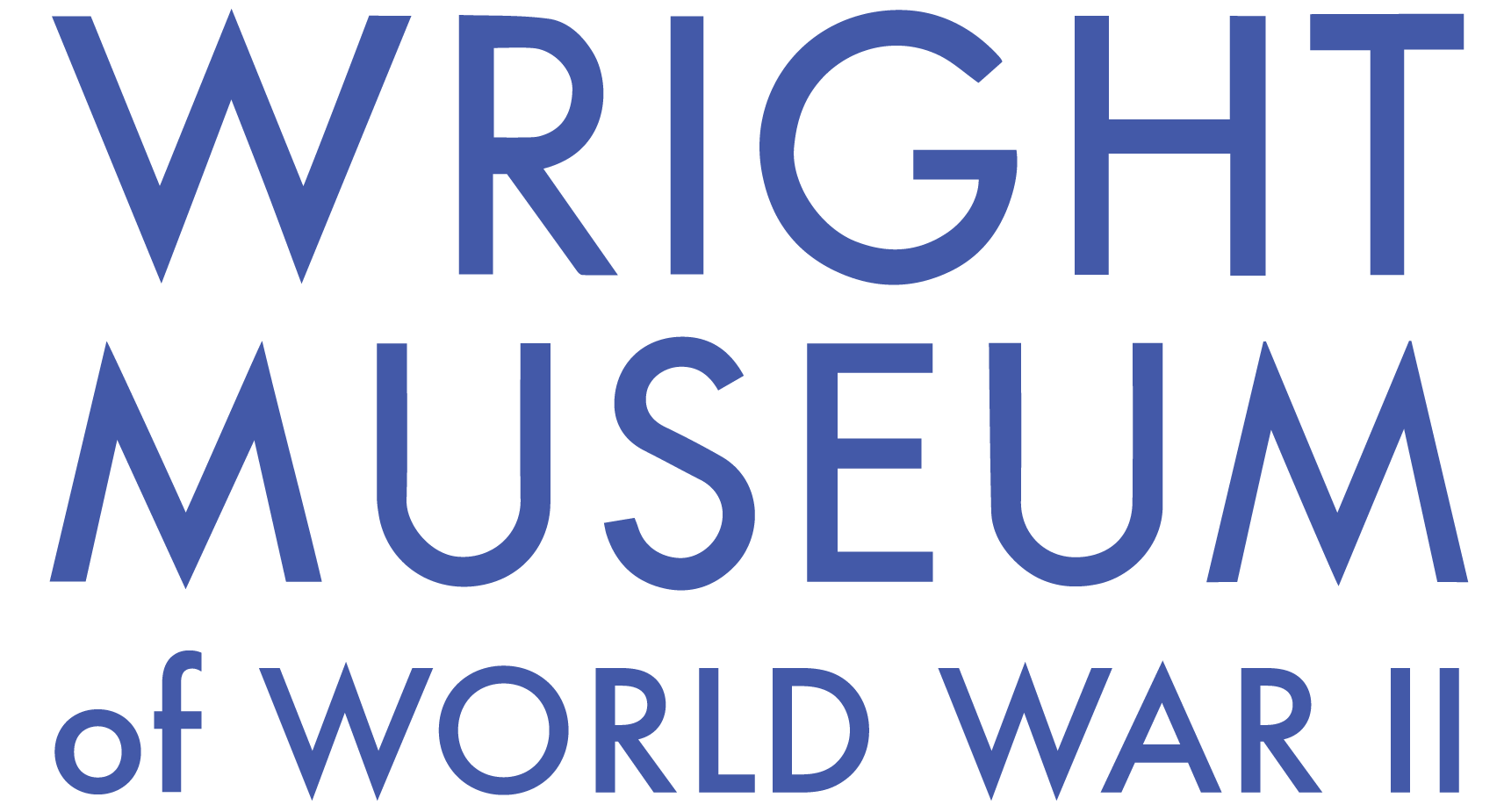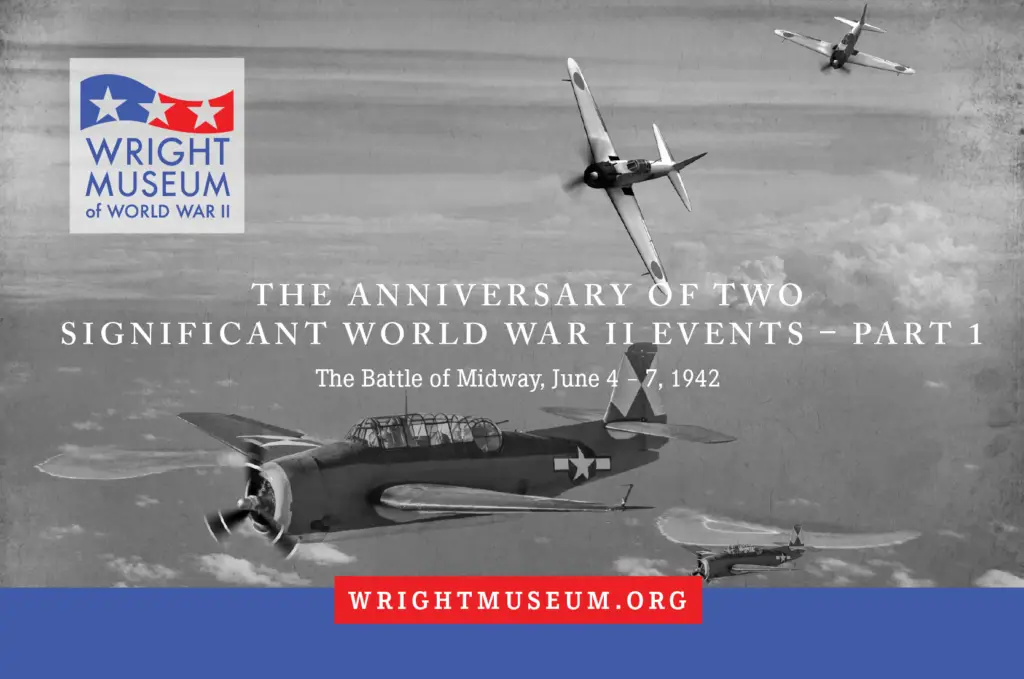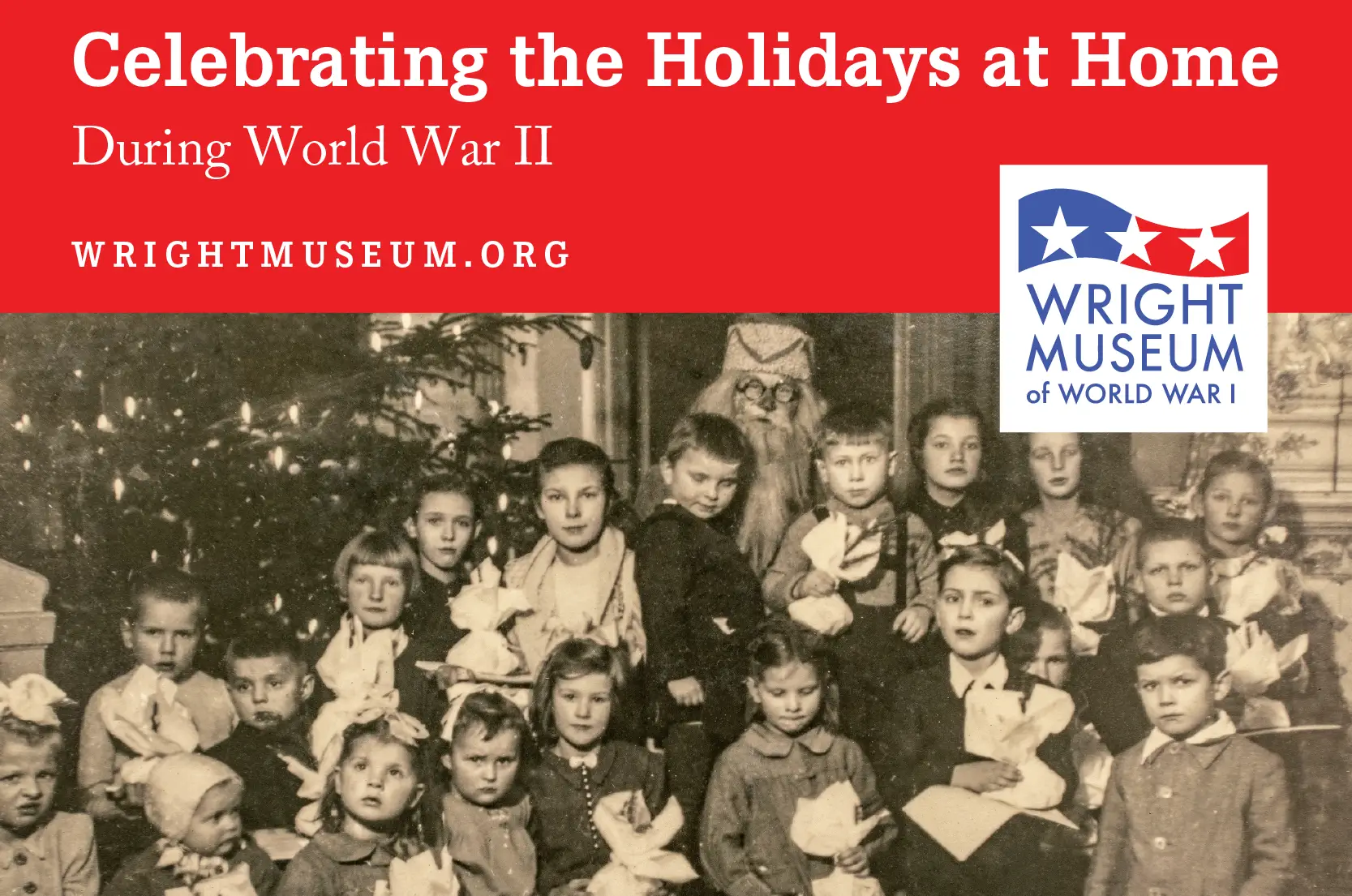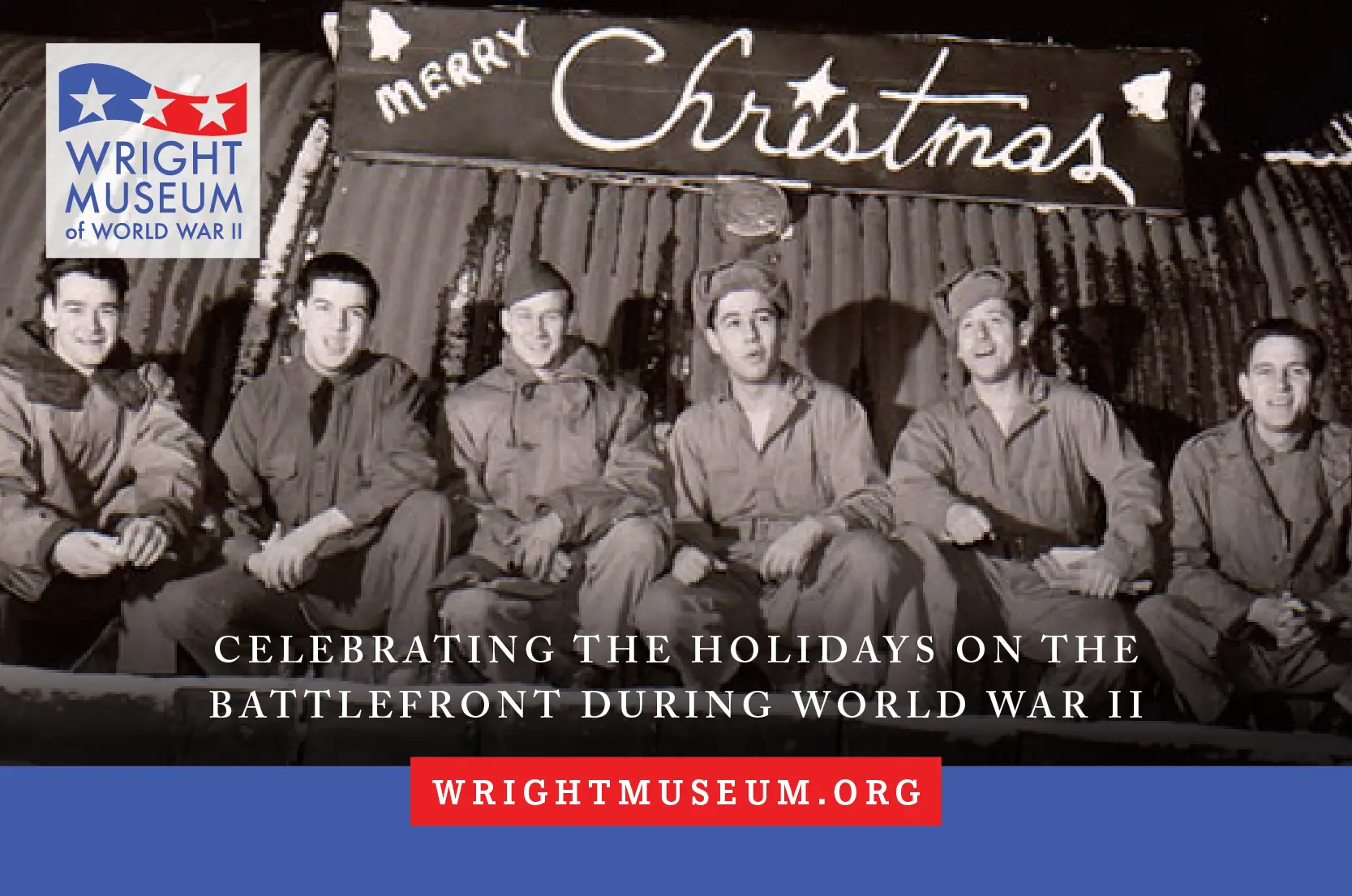The Battle of Midway, June 4 – 7, 1942
Why does a tiny, 2.4 square-mile atoll at the end of the Hawaiian archipelago mean so much? The answer, as they say in real estate, is location, location, location. Midway Atoll lies roughly equidistant between North America and Asia, making it strategically significant for both continents. Claimed for the United States in July 1859, by 1935 Midway had become a popular stopover point for transpacific flights, and in 1940 the U.S. Navy had a presence in the atoll, with air and submarine bases providing a forward operating theater in the Pacific.
Midway’s location was so strategically important that Japan included it in the planning of its offensive campaign at the outset of their involvement in World War II. In fact, mere hours after their attack on Pearl Harbor, Japanese forces were already attacking the U.S. bases at Midway. The Japanese attack at Midway on December 7 and 8, 1941 resulted in the first U.S. Marine to be awarded the Congressional Medal of Honor during World War II. For his efforts in directing one of the atoll’s defensive batteries, though severely wounded by a Japanese shell (later dying as a result of them), Lieutenant George Cannon was posthumously awarded the Medal of Honor.
Prior to the Imperial Japanese Navy’s attack on Midway in the early morning hours of June 4, 1942, U.S. military forces had intercepted and decoded Japanese messages about the imminent attack, allowing them to position forces and be ready to defend the atoll. It would become a naval battle for dominance that was largely fought in the air, with Japanese and American aircraft fighting anywhere from 50 to 150 miles apart. Though the initial attack caused damage to the U.S. bases, the runways remained largely unharmed, allowing the U.S. to launch its aircraft and converge on the Japanese fleet.
By the evening of June 4, two of the four Japanese carriers had sunk, with the other two significantly damaged. All four had participated in the attack on Pearl Harbor. The U.S. had lost its carrier, Yorktown, listing heavily with a crew desperately trying to save it; it would sink by the end of June 6.
By the end of the Battle of Midway, the United States had scored a strategic victory, one that would see the end of Japanese offensive action in the Pacific Theater, and that marked the first naval defeat the Japanese had seen since 1592. It was a U.S. victory marked by the Navy as a “victory of intelligence,” which gave naval forces a significant advantage in preparing for and executing its battle plan. Japanese losses were significant, with over 3,000 Japanese sailors and airmen killed and 248 aircraft lost, as well as a destroyer, four carriers, and one cruiser. On the U.S. side, one destroyer and one carrier were lost, as were 150 aircraft. However, U.S. personnel losses numbered only 307. From this point on, Japan went on the defensive, with the United States and its allies beginning their offensive attack to win the Pacific.
Want to learn more about what was going on at the war fronts as well as at home? Make sure you reserve a spot for our June lecture series, including the June 11 lecture “Joe McQuaid—War Fronts Home Fires.” Joe McQuaid was a World War II war correspondent who covered the South Pacific and Europe. Learn about his experiences as well as his wife’s back home to learn more about what it was like during the war.
And be sure to join us at the Museum on June 6, 2024 when we kick off our 30th anniversary celebration. Check out the website to learn more about the special programming we’ll have available all summer long!
For more information on the Battle of Midway and Midway Atoll, consider visiting these sites:
The National WWII Museum New Orleans
Stay tuned for Part 2 in this blog series, released later this month, where we will walk through the significance of D-Day and the invasion of Normandy.




